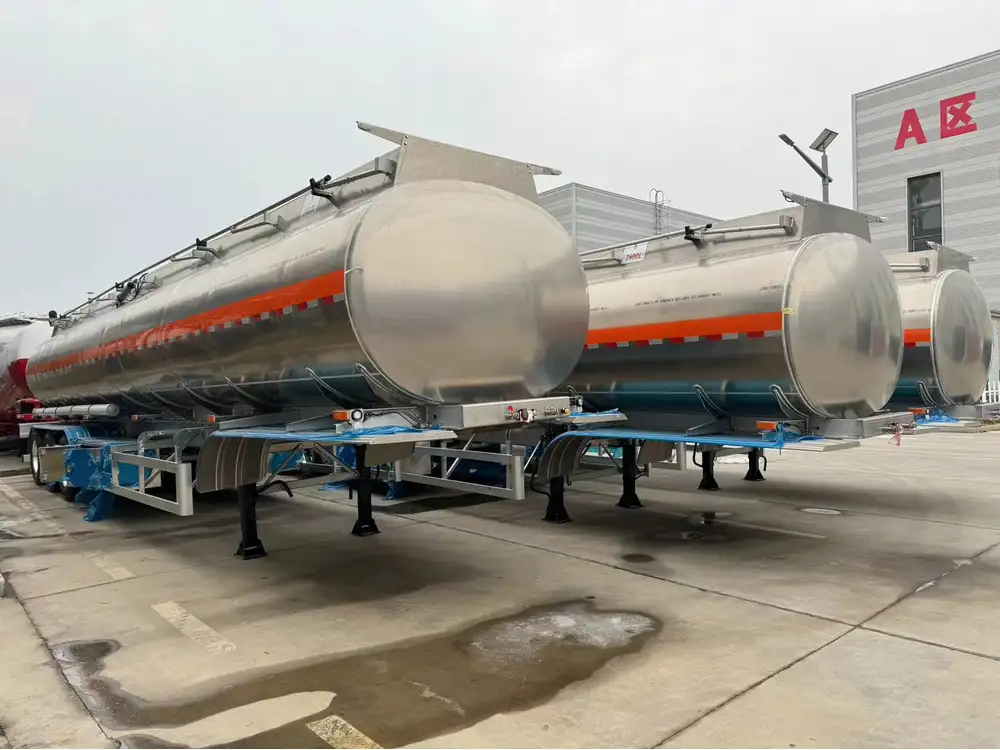When it comes to understanding semi-trailer widths in Australia, it’s crucial for manufacturers, transport providers, and regulatory bodies alike to have clear, accurate knowledge. This article delves deeply into the intricacies of semi-trailer dimensions, exploring standard sizes, regulatory requirements, and vital considerations for operators in the trucking industry.
Understanding Semi-Trailer Widths
Standard Widths in Australia
Semi trailers, an essential component of the freight transport industry, are subject to stringent size regulations. The most common width for semi-trailers in Australia is 2.5 meters (approximately 8.2 feet). This standard dimension is largely in place to ensure safety on the roads, facilitating easier navigation within narrow roadways and urban environments.
| Trailer Type | Maximum Width |
|---|---|
| Standard Semi-Trailer | 2.5 meters |
| Over-Dimensional Load | 2.6 meters (with special permits) |

Importance of Width Regulations
Adhering to width specifications is not merely a bureaucratic exercise; it plays a pivotal role in several aspects:
- Safety: Wider trailers can pose risks on narrow roads and bridges.
- Compatibility: Ensuring trailers fit within designated lanes prevents accidents.
- Efficiency in Logistics: Uniform dimensions aid in the effective planning of transport routes and loading docks.
Understanding the Variations in Trailers
Types of Semi-Trailers and Their Dimensions
Semi-trailers come in various configurations, each designed for specific loads. Familiarity with different types and their respective widths can assist in choosing the right solution for specific transport needs. Here is a breakdown of common types:
| Semi-Trailer Type | Common Widths | Applications |
|---|---|---|
| Flatbed | 2.5 meters | Construction materials, machinery |
| Refrigerated | 2.5 meters | Perishable goods, pharmaceuticals |
| Curtain Side | 2.5 meters | General cargo, easy loading/unloading |
| Tanker | 2.5 meters | Liquid transport, fuels |

Oversized and Special Load Regulations
Any semi-trailer exceeding the standard 2.5 meters in width is classified as an oversize vehicle. For such vehicles, specific permits are required, and regulations vary by region. Operators should be aware of:
- Maximum Allowed Width: Typically up to 2.6 meters under special conditions.
- Permitting: Obtain necessary local council or state transport authority permits.
- Escort Requirements: Some loads necessitate the presence of pilot vehicles.
Key Considerations for Semi-Trailer Operators
Navigating Legal Frameworks
Transport operators must navigate a complex legal landscape when it comes to semi-trailer width. The National Heavy Vehicle Regulator (NHVR) oversees compliance, offering detailed guidelines and resources to enhance understanding. Operators should stay updated with:
- National Vehicle Standards: Guidelines for all heavy vehicles operating on Australian roads.
- Specific State and Territory Legislation: Each has unique rules regarding trailer dimensions.

Route Planning and Logistics
Understanding the width dynamics can significantly enhance route efficiency. Operators must consider:
- Road Conditions: Some roads may have specific restrictions that limit vehicle width.
- Loading Dock Dimensions: Ensuring that trailers can fit in intended loading/unloading zones.
Safety Measures and Best Practices
To mitigate risks associated with wider trailers, operators should implement best practices such as:
- Regular Maintenance: Keeping trailers in optimal condition to ensure maneuverability.
- Driver Training: Educating drivers on handling larger vehicles effectively.
- Monitoring Load Distribution: Ensuring weight is evenly distributed to maintain stability.
The Impact of Technology on Semi-Trailer Design

Innovations Enhancing Transport Efficiency
The trucking industry is continuously evolving, with new technologies pushing the boundaries of semi-trailer capabilities. Key developments include:
- Smart Trailers: Equipped with sensors to monitor cargo condition and optimize route efficiency.
- Advanced Materials: Lightweight materials reducing trailer weight without compromising strength, allowing for potentially larger cargo.
Future Trends in Semi-Trailer Wider Configurations
Trend analysis suggests a shift toward wider semi-trailer configurations due to increasing freight demands. This may lead to:
- Changes in Legislation: Authorities may reconsider current width regulations to accommodate growing industries.
- Enhanced Infrastructure: Upgrades to roads and loading facilities to support larger trailers.
Conclusion: Navigating the Dimensions of Semi-Trailers
Understanding the width of semi-trailers in Australia isn’t merely about comprehending one measurement; it’s an intricate dance involving regulations, safety considerations, and technological advancements. For operators, manufacturers, and transport providers, staying informed of the dimensional standards can lead to improvements in operational efficiency and compliance with the law.
It is paramount that industry stakeholders remain proactive in understanding the implications of semi-trailer dimensions. Through careful consideration of the information presented – ranging from standard measurements and types, through to compliance with regulations and embracing innovative technologies – operators can efficiently navigate the complexities of the transport landscape in Australia.

Additional Resources and Useful Links
- National Heavy Vehicle Regulator (NHVR)
- Austroads: Heavy Vehicle Dimensions
- Department of Transport: Oversize Vehicle Permit Information
This comprehensive guide not only provides clarity on the width of semi-trailers in Australia but also advocates for the importance of understanding surrounding regulations and best practices. Engaging with this knowledge paves the way for smoother operations and a safer transport industry for all stakeholders involved.



